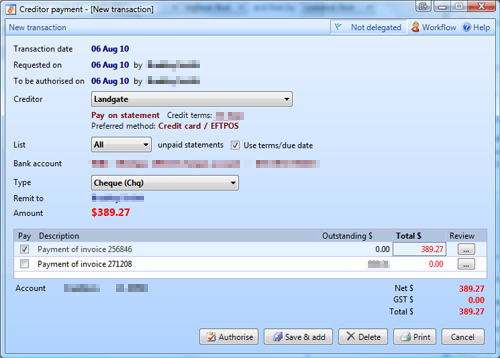The creditor payment (transaction number prefix CP) is a specialised type of general transaction used to reduce the balance against a creditor by paying (in-full or in-part) outstanding invoices/statements.

Creditor payments typically credit a bank account and debit the Creditors controlled account. The amount is built by allocating payment to the outstanding invoices/statements for the selected creditor. Allocation is granular to the point where each invoice line can be paid in-full or in-part. Invoices/statements may only be paid if they have been reconciled. It is not possible to overpay a creditor using this type of transaction, nor is it possible to pay an amount that has not previously been recorded as an invoice or statement.
Additionally to the payment methods supported by general payment transactions, creditor payments support the direct debit method. In all other respects, creditor payments behave like the more generic GP transaction type.
Authority Levels
When assigning transaction authority limits, be aware that creditor payments may be subject to one of two possible authority levels:
- General payment authority levels - Used for all payment methods except direct debit.
- Direct debit authority levels - Used for the direct debit payment method.
See also
List of transaction types
Creditor journal
Disbursement journal
Creditor reconciliation